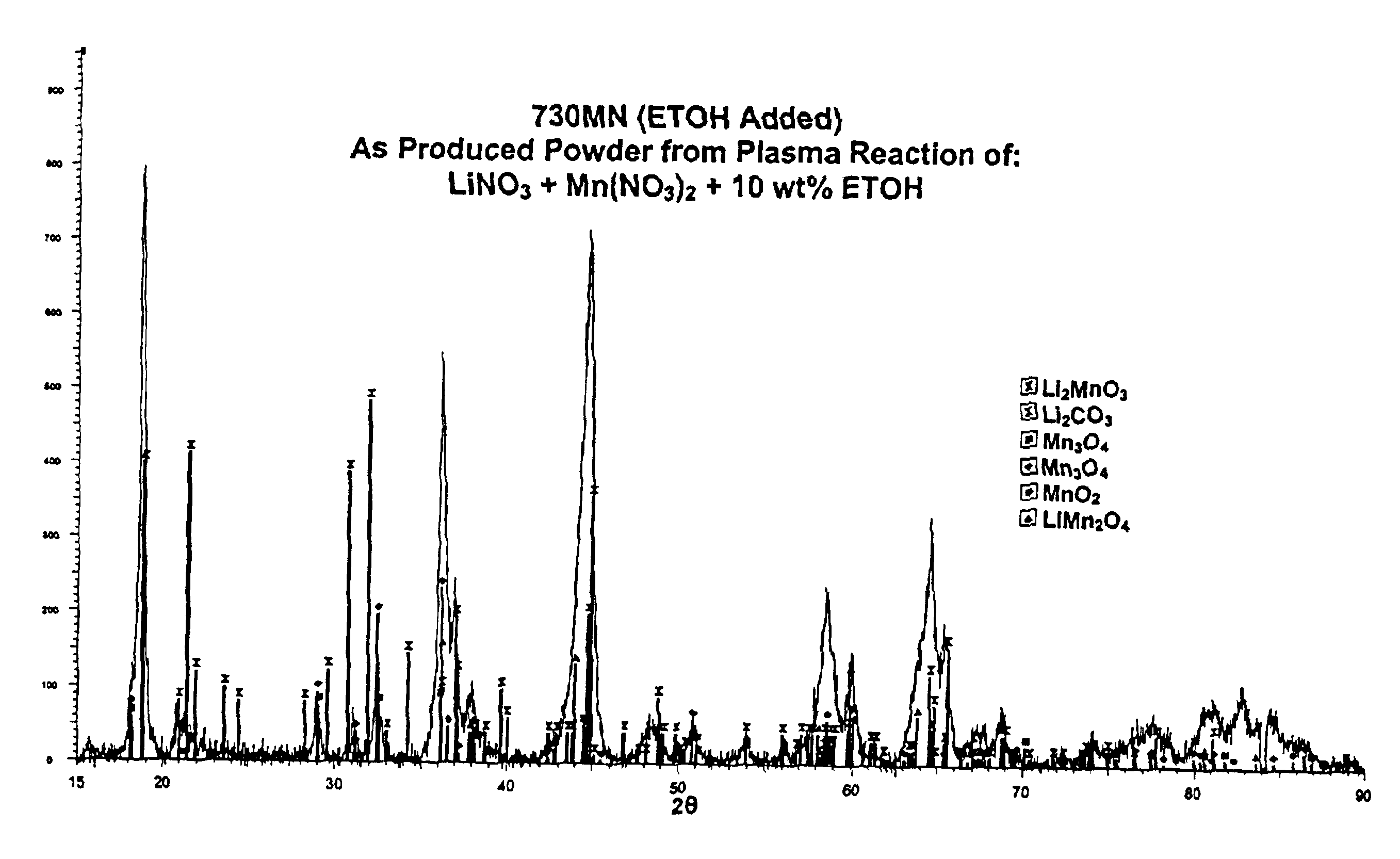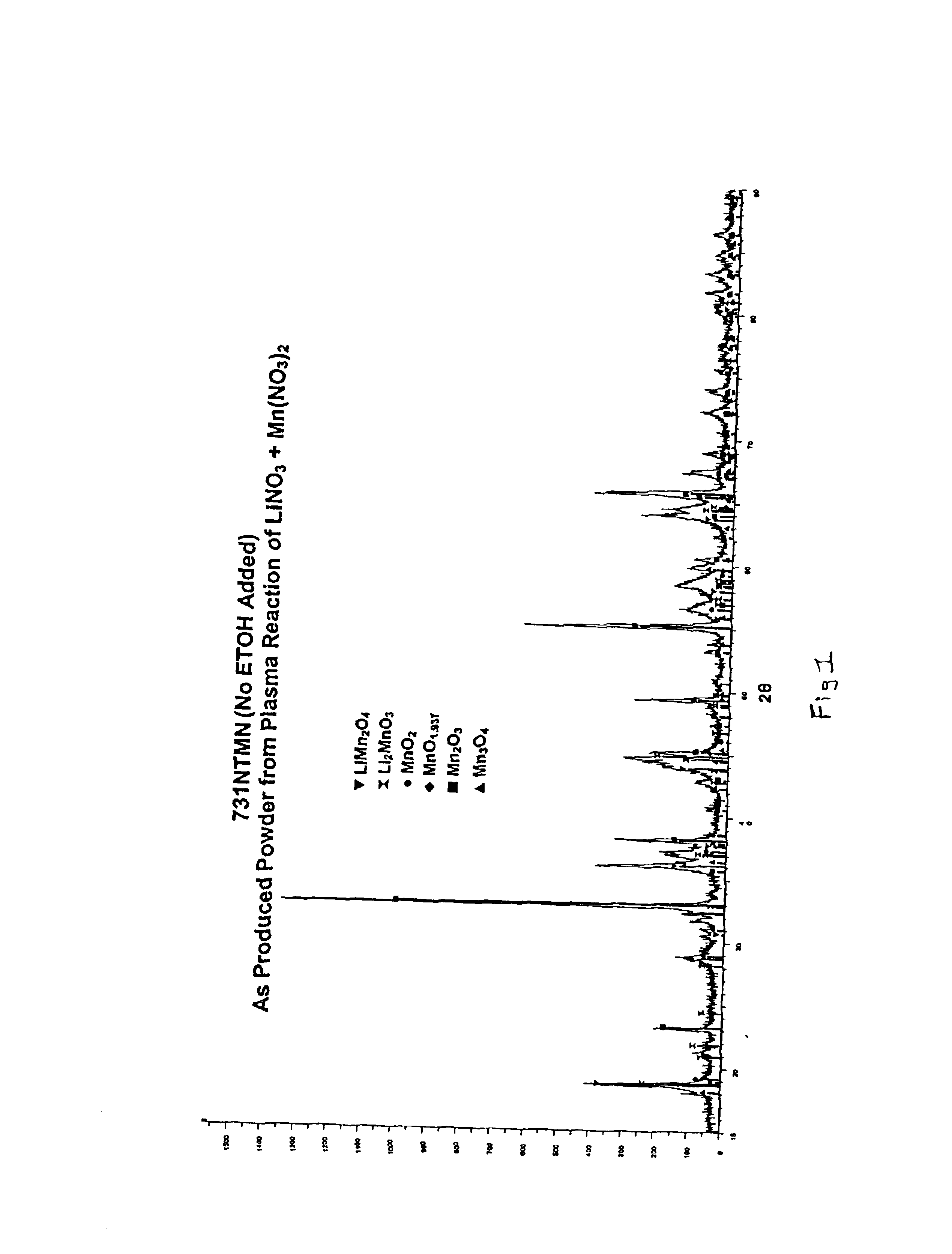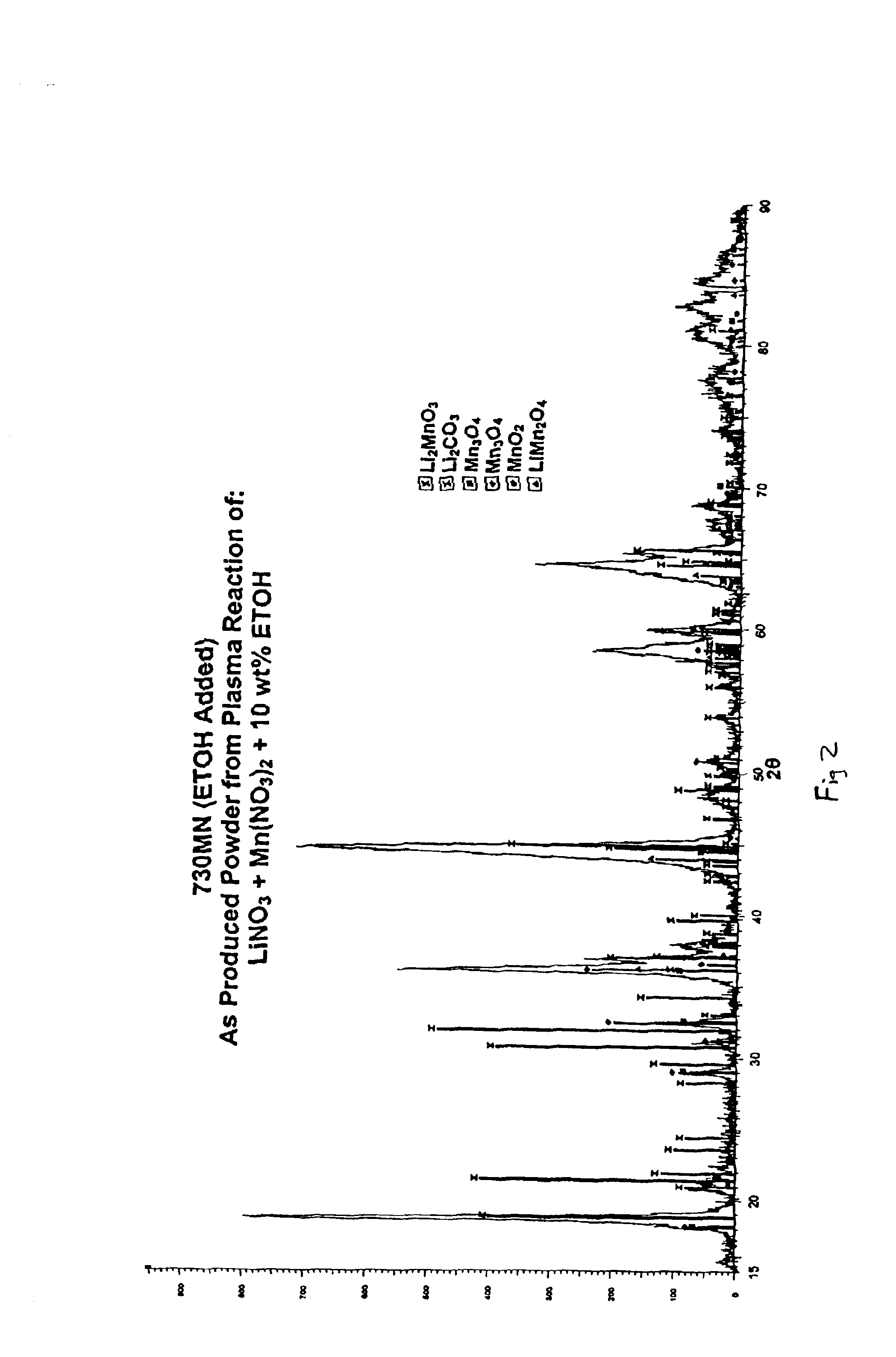Plasma synthesis of lithium based intercalation powders for solid polymer electrolyte batteries
- Summary
- Abstract
- Description
- Claims
- Application Information
AI Technical Summary
Benefits of technology
Problems solved by technology
Method used
Image
Examples
example 1
Preparation of LiFeO2 from LiNO2 and Fe(NO3)3
The process begins with the formation of an aqueous solution consisting of 1M LiNO3 and 1M Fe(NO3)3, and 20% ethanol by weight. The feed solution is then mixed with O2 gas, wherein the O2 gas atomizes the solution. The atomized feed solution is then sprayed into the plasma torch and the reaction takes place. The resulting powder contains the intercalation compound LiFeO2 in substantial amounts. (see, FIG. 5) The resulting powder mixture can be subsequently calcined for 48 hours at 600° C. to form a purer, single phase compound. The X-ray diffraction pattern of the subsequently calcined powder is shown in FIG. 6.
example 2
Preparation of LiMn2O4 from LiNO3 and Mn(NO3)2
The process begins with the formation of an aqueous solution consisting of 1M LiNO3, 1M Mn(NO3)2 and 10% ethanol by weight. The feed solution is then mixed with O2 gas, wherein the O2 gas atomizes the solution. The atomized feed solution is then sprayed into the plasma torch and the reaction takes place. The resulting powder contains the intercalation compound LiMn2O4 in substantial amounts (see, FIG. 2) The resulting powder mixture can be subsequently calcined for 48 hours at 600° C. to form a purer, single phase product. The X-ray diffraction pattern of the subsequently calcined powder is shown in FIG. 4.
example 3
Preparation of LiCoO2 from LiNO3 and Co(NO3)2
The process begins with the formation of an aqueous solution consisting of 1M LiNO3, 1 M Co(NO3)2 and 20% ethanol by weight. The feed solution is then mixed with O2 gas, wherein the O2 gas atomizes the solution. The atomized feed solution is then sprayed into the plasma torch and the reaction takes place. The resulting powder contains the intercalation compound LiCoO2 in substantial amounts. (see, FIG. 7)The resulting powder mixture can be subsequently calcined for 16 hours at 600° C. to form a purer, single phase product. The X-ray diffraction pattern of the subsequently calcined powder is shown in FIG. 8.
PUM
 Login to View More
Login to View More Abstract
Description
Claims
Application Information
 Login to View More
Login to View More - R&D
- Intellectual Property
- Life Sciences
- Materials
- Tech Scout
- Unparalleled Data Quality
- Higher Quality Content
- 60% Fewer Hallucinations
Browse by: Latest US Patents, China's latest patents, Technical Efficacy Thesaurus, Application Domain, Technology Topic, Popular Technical Reports.
© 2025 PatSnap. All rights reserved.Legal|Privacy policy|Modern Slavery Act Transparency Statement|Sitemap|About US| Contact US: help@patsnap.com



